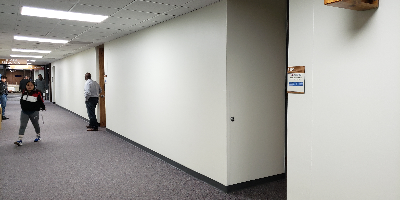W. N. Ewing Argentine Smelter (jan 1, 1880 – jan 1, 1901)
Description:
Work on a new smelter was begun in 1880: It was this location that W. N. Ewing came upon in his search for a smelter site. Ewing, in the late 1870's, was the owner of a smelting establishment in Colorado. He encountered financial and technical difficulties there, however. Labor was also unreliable and scarce. Ewing thus carefully chose a site to relocate his smelter. Astride the railroad tracks and with the county's growing population, Ewing saw the Argentine site as fulfilling the economic considerations mentioned above. At that time, except for a few scattered farms, the area was largely uninhabited. The site of the smelter was later occupied by Kansas City Structural Steel. This site was originally an orchard and now has been reclaimed as a retail commercial site and the south district KCK Police station. Emerson Park was a swamp marsh and a large cornfield stood where the town of Argentine was to be plotted. Work on the new smelter began in the summer of 1880 and was completed by the fall. Ewing and other prominent businessmen were aware of the need for some sort of an organized town. In the smelter's first year of operation, it refined 40 ounces of gold, 463,000 ounces of silver, and 3,100 tons of lead. In 1882, receiving ores from all parts of the continent, the smelter did a business of $10 million dollars. Over the next two decades this figure would be surpassed many times. August R. Meyer was the real genius behind the smelter's prosperity. Meyer had been in the smelting business in Colorado. In 1881, he purchased the controlling interest in the Argentine smelter and called the reorganized company the Kansas City Consolidated Smelting and Refining Company. Under his leadership, in the years 1881-98, over twenty-two million dollars’ worth of gold, seventy-four million dollars’ worth of silver and thirty-six million dollars’ worth of lead were produced. In 1898, the peak year, the Argentine Smelter produced one-twelfth of all the gold, on-eighth of all the silver and one-fifth of all the lead produced in the United States. The Argentine smelter was credited with being the largest smelter in the world and Argentine was referred to as the "Silver Refining Capital of the World".Ores were shipped by rail to Argentine from throughout North and South America. The huge smelting grounds comprised 18 acres. Approximately one-third of this tract was covered with buildings. There were five general departments in the plant. They were the assaying, sampling, roasting, smelting, and refining departments. Most of the smelting process required skilled labor. Consequently, many smelter workers came from Europe to work here. At one time, almost half of the town's population was comprised of the smelter colony. Work at the smelter was an extremely hazardous occupation. Workers became ill from the sickening fumes of the melting ore. Some workers became paralyzed and died from lead poisoning. Winds blew the toxic fumes directly over Argentine. Because of fog and high humidity, smelter fumes covered the little city for much of the year. Vegetation and grass could not grow in many areas. Occasionally fumes were so bad that dogs and cats suffocated on the streets. The 12-hour workdays at the smelter definitely made it not a good place to work. Good wages, however, were paid. In fact, the Argentine smelter once boasted of the reputation of paying the highest wages of any manufacturing firm east fo the Rocky Mountains. In 1901, the following wages were paid: common laborers - $1.50 per day; Vitriol plant employees - $1.80 per day; furnace men - $2.00-2.70 per day; gold room employees - $2.00 per day; blast furnace men - $3.00 per day, and superintendents and foremen - $75-$150 per month. Due to the value fo the precious ores, great security was employed at the plant. Armed guards patrolled the gates. Men were searched whenever they entered or left the smelter. Heavy bricks of gold and silver, however. were usually left unguarded on the docks. These ores were shipped by Wells Fargo wagons to the railroad depot. All gold went to the federal mints where it was exchanged with its value in money. Silver was stamped with the company's trademark and sold on the open market. Eventually, most of it ended up in the federal mints. Lead was sold on the open market as was zinc and metallic sulfates such as blue and white vitriol. Source: https://khri.kansasgis.org/
Added to timeline:
Date:
jan 1, 1880
jan 1, 1901
~ 21 years
